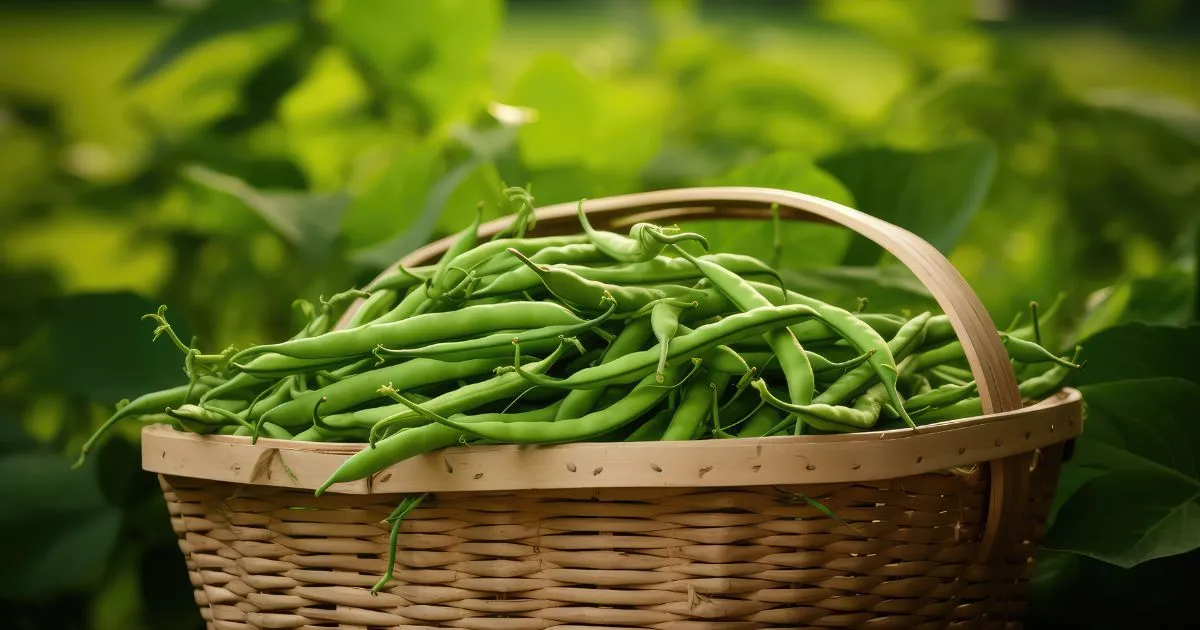Table of Contents
Green beans, also known as string beans or snap beans, are a popular and nutritious vegetable that can be easily grown in your garden. Whether you’re a seasoned gardener or a beginner, planting green beans can be a rewarding experience. In this article, we will explore the step-by-step process of planting green beans, from selecting the right variety to harvesting your crop. We’ll also cover common questions and provide tips to ensure a successful harvest.
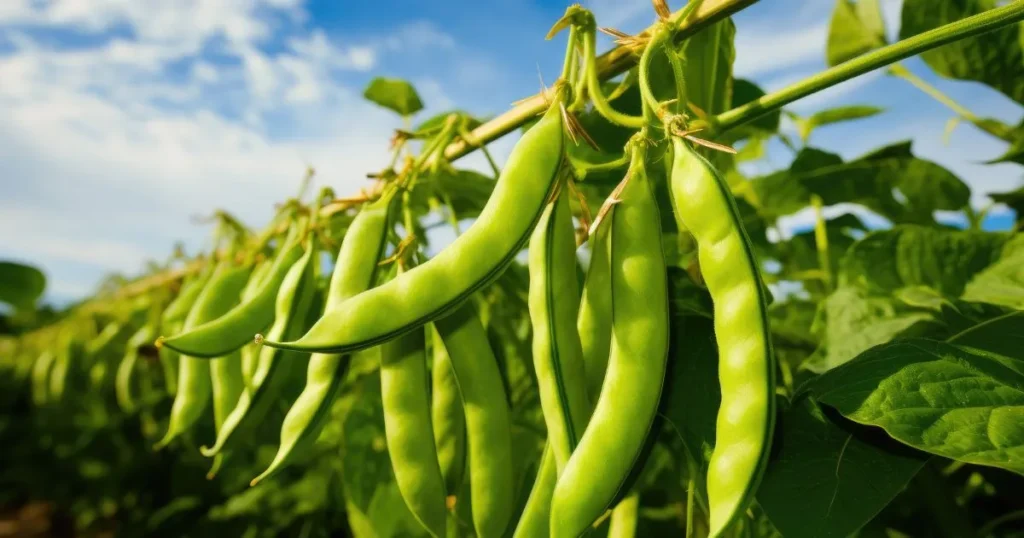
Choosing the Right Variety
Understanding Different Types of Green Beans
Before you start planting, it’s important to understand the different types of green beans available. There are two main categories: bush beans and pole beans.
- Bush Beans: These are compact plants that grow to about 1-2 feet tall and do not require support. They tend to produce a large crop all at once, making them ideal for canning or freezing.
- Pole Beans: These are vining plants that can grow up to 10-15 feet tall and require trellises or poles for support. Pole beans produce a continuous harvest over a longer period, making them great for fresh eating.
Selecting the Best Variety for Your Garden
When deciding how to plant green beans, consider your garden space, climate, and personal preferences. Some popular varieties include:
- Blue Lake: A classic pole bean known for its excellent flavor and productivity.
- Contender: A bush bean that is heat-tolerant and produces early yields.
- Kentucky Wonder: A pole bean that is highly productive and disease-resistant.
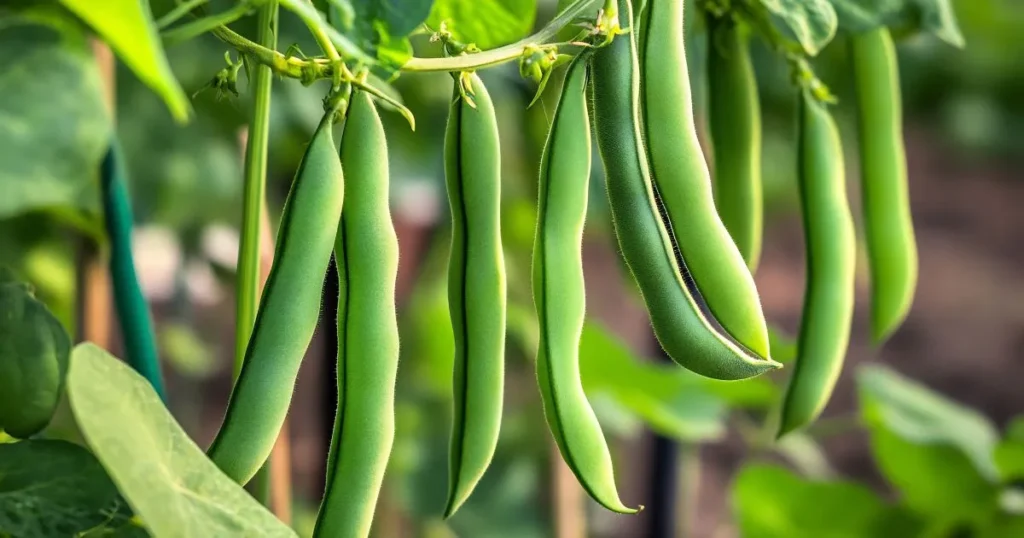
Preparing the Soil
Soil Requirements for Green Beans
Green beans thrive in well-draining soil with a pH between 6.0 and 7.0. They prefer soil that is rich in organic matter, so it’s a good idea to amend your garden bed with compost or well-rotted manure before planting.
Testing and Adjusting Soil pH
If you’re unsure about your soil’s pH, you can test it using a soil test kit available at most garden centers. If the pH is too low (acidic), you can add lime to raise it. If the pH is too high (alkaline), you can add sulfur to lower it.
Preparing the Garden Bed
- Clear the Area: Remove any weeds, rocks, or debris from the planting area.
- Loosen the Soil: Use a garden fork or tiller to loosen the soil to a depth of at least 6-8 inches.
- Add Organic Matter: Mix in compost or well-rotted manure to improve soil fertility and structure.
- Level the Soil: Rake the soil to create a smooth, level surface for planting.
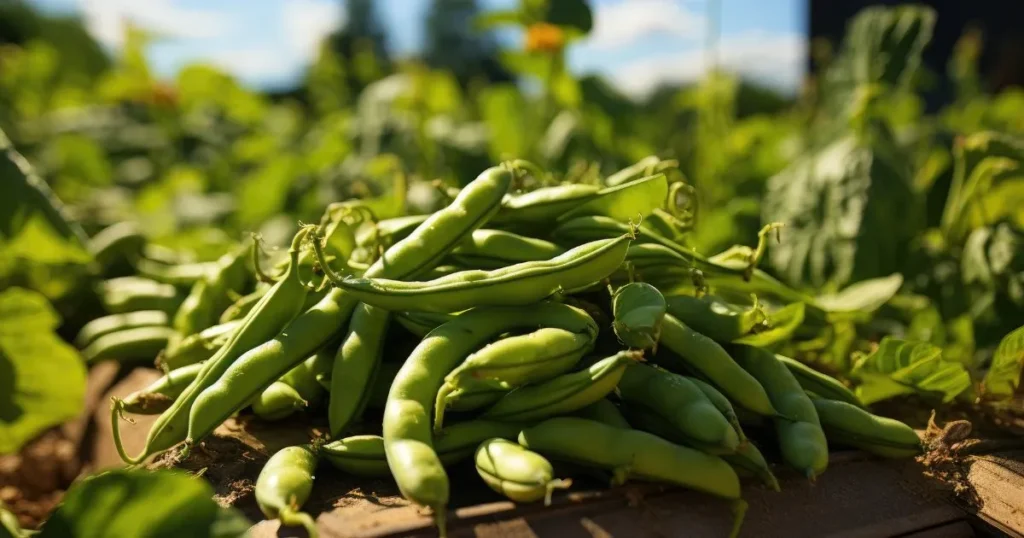
Planting the Seeds
When to Plant Green Beans
Green beans are warm-season crops that should be planted after the last frost date in your area. The soil temperature should be at least 60°F (15°C) for optimal germination. In most regions, this means planting in late spring or early summer.
Step-by-Step Instructions
- Spacing: For bush beans, space the seeds about 2-4 inches apart in rows that are 18-24 inches apart. For pole beans, space the seeds about 4-6 inches apart in rows that are 30-36 inches apart.
- Planting Depth: Plant the seeds about 1-1.5 inches deep. If the soil is heavy or clay-like, plant the seeds slightly shallower.
- Watering: After planting, water the seeds thoroughly to ensure good soil contact and to kickstart the germination process.
- Mulching: Apply a layer of mulch around the plants to help retain moisture, regulate soil temperature, and suppress weeds.
Supporting Pole Beans
If you’re planting pole beans, you’ll need to provide support for the vines to climb. You can use trellises, poles, or even a simple teepee structure made from bamboo stakes. Make sure the support is sturdy and tall enough to accommodate the full height of the plants.
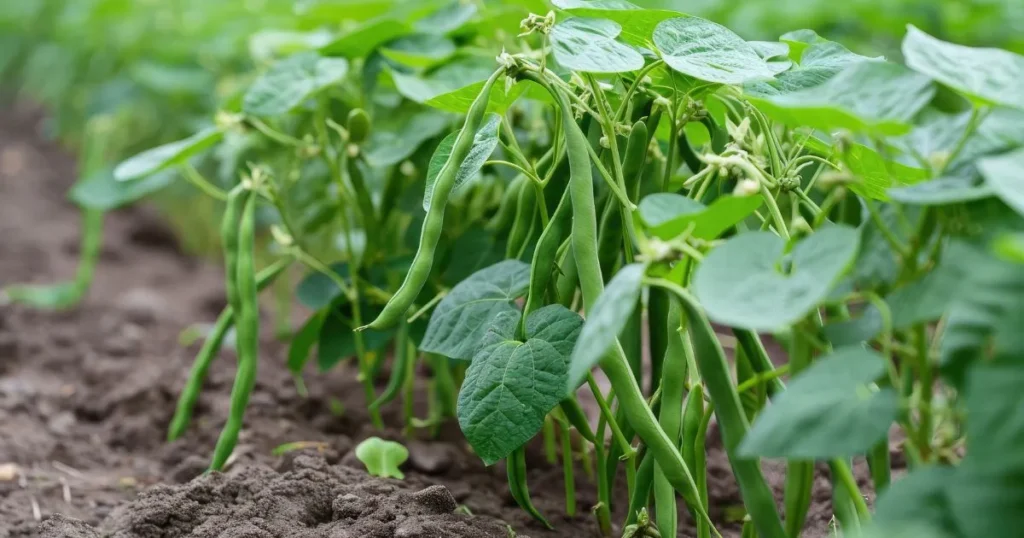
Caring for Your Plants
Watering Green Beans
Green beans need consistent moisture, especially during flowering and pod development. Water the plants deeply once or twice a week, depending on weather conditions. Avoid overhead watering, as this can promote fungal diseases. Instead, use a soaker hose or drip irrigation to water at the base of the plants.
Fertilizing Green Beans
Green beans are light feeders and generally do not require heavy fertilization. However, if your soil is poor, you can apply a balanced fertilizer (such as 10-10-10) at planting time. Avoid over-fertilizing, as this can lead to excessive foliage growth at the expense of pod production.
Managing Pests and Diseases
Green beans can be susceptible to pests such as aphids, bean beetles, and spider mites. Regularly inspect your plants for signs of infestation and take appropriate action, such as using insecticidal soap or introducing beneficial insects like ladybugs.
Common diseases include powdery mildew, rust, and bacterial blight. To prevent these, practice crop rotation, avoid overhead watering, and remove any infected plants promptly.
Weeding
Keep the area around your green bean plants free of weeds, which can compete for nutrients and water. Mulching can help suppress weeds, but you may still need to hand-pull any that emerge.
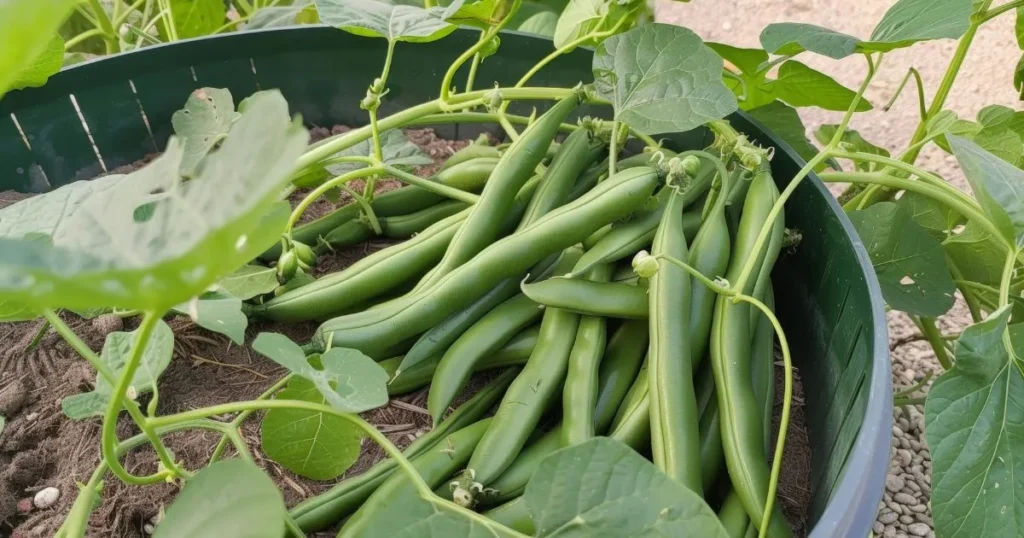
Harvesting Your Crop
When to Harvest Green Beans
Green beans are typically ready to harvest 50-60 days after planting, depending on the variety. The pods should be firm, crisp, and about the thickness of a pencil. Harvest the beans regularly to encourage continued production.
How to Harvest Green Beans
- Use Two Hands: Hold the stem with one hand and gently pull the pod with the other to avoid damaging the plant.
- Harvest Frequently: Check your plants every 2-3 days during peak production to ensure you pick the beans at their peak tenderness.
- Store Properly: Fresh green beans can be stored in the refrigerator for up to a week. For longer storage, consider blanching and freezing them.
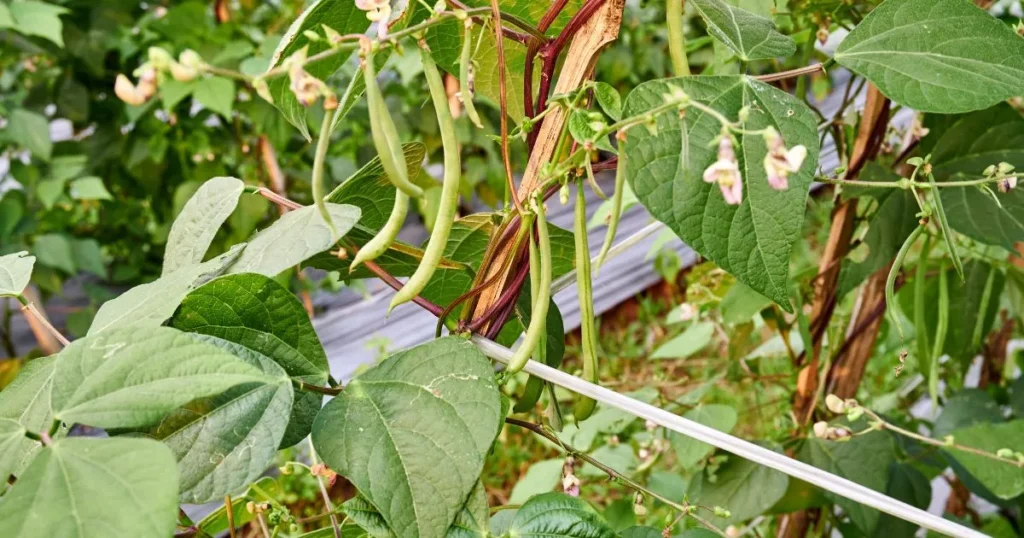
Conclusion
Planting green beans is a straightforward and rewarding gardening activity that can provide you with a bountiful harvest of fresh, nutritious vegetables. By choosing the right variety, preparing the soil properly, and providing consistent care, you can enjoy a successful green bean crop throughout the growing season. Whether you prefer bush beans for their compact growth or pole beans for their continuous harvest, green beans are a versatile and delicious addition to any garden.
FAQ
1. How deep should I plant green bean seeds?
- Green bean seeds should be planted about 1-1.5 inches deep. In heavy or clay-like soil, plant them slightly shallower.
2. How far apart should I space green bean plants?
- For bush beans, space the seeds 2-4 inches apart in rows 18-24 inches apart. For pole beans, space the seeds 4-6 inches apart in rows 30-36 inches apart.
3. Do green beans need a lot of water?
- Green beans need consistent moisture, especially during flowering and pod development. Water deeply once or twice a week, depending on weather conditions.
4. Can I grow green beans in containers?
- Yes, green beans can be grown in containers, especially bush varieties. Choose a container that is at least 12 inches deep and wide, and ensure it has good drainage.
5. How do I support pole beans?
- Pole beans require trellises, poles, or other support structures to climb. Make sure the support is sturdy and tall enough to accommodate the full height of the plants.
6. When is the best time to harvest green beans?
- Green beans are typically ready to harvest 50-60 days after planting. The pods should be firm, crisp, and about the thickness of a pencil.
7. Can I save seeds from my green beans for next year?
- Yes, you can save seeds from your green beans. Allow some pods to mature and dry on the plant, then harvest the seeds and store them in a cool, dry place.
8. What are common pests and diseases that affect green beans?
- Common pests include aphids, bean beetles, and spider mites. Common diseases include powdery mildew, rust, and bacterial blight. Regular inspection and proper care can help manage these issues.
9. How can I extend the green bean harvest season?
- To extend the harvest season, consider planting successive crops of bush beans every 2-3 weeks. Pole beans, on the other hand, produce a continuous harvest over a longer period.
10. Can green beans be grown in partial shade?
- Green beans prefer full sun but can tolerate partial shade. However, they may produce fewer pods in less than optimal sunlight conditions.

